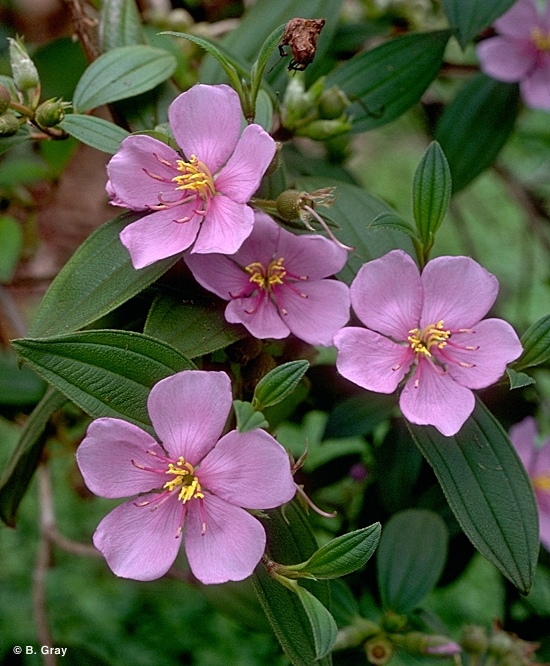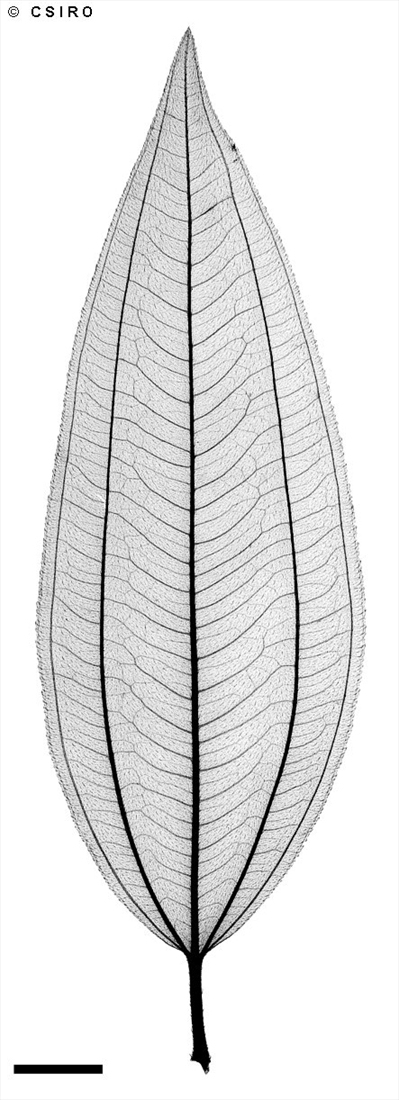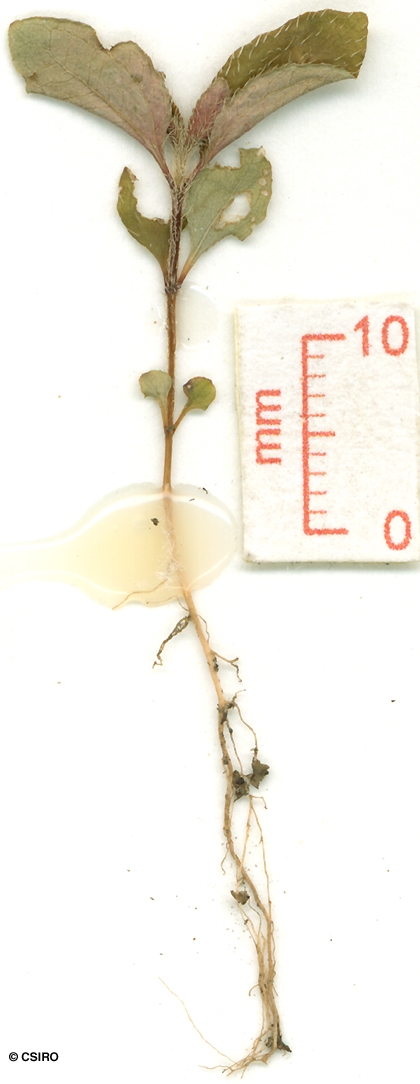Australian Tropical Rainforest Plants - Online edition
Melastoma malabathricum L. subsp. malabathricum







Meyer, K. (2001) Blumea 46(2): 364.
Blue Tongue; Lasiandra, Native; Native Lasiandra; Rhododendron, Straits; Straits Rhododendron
Usually flowers and fruits as a shrub about 1-3 m tall.
Leaf blades about 6-11 x 2-4 cm, clothed in simple, +/- prostrate hairs, more conspicuous on the upper than on the lower surface. Each leaf with a midrib and two major longitudinal veins plus two other longitudinal veins which could nearly be regarded as intramarginal veins. Large hairs on the twigs between the petiole bases resemble stipules.
Calyx tube about 5-10 mm long, outer surface densely clothed in prostrate hairs while the inner surface is +/- glabrous. Calyx lobes about 4 mm long. Petals about 20-30 mm long. Stamens ten, dimorphic. Shorter stamens with glands at the base of the anther, longer stamens with glands on the filament about 6-7 mm from the base of the anther, and the filament between the anther and the gland is distinctly bent and curved. Anthers with a terminal pore.
Capsules about 10 mm diam., +/- fleshy and splitting irregularly usually in the equatorial region. Seeds immersed in a dark, almost black, pulp. Seeds very small, about 0.5-0.6 mm diam., cochleate or U-shaped. Testa minutely tuberculate with the tubercles arranged in +/- longitudinal lines. Embryo +/- boomerang-shaped, cotyledons hooked at the apex, about as wide as the radicle. Two types of 'seeds' are produced, those with a pale testa are fully developed and viable and those with a red testa are empty and lack an embryo.
Cotyledons small, about 1.5-2 x 2-2.5 mm, petioles about 1 mm long, hypocotyl 4-angled, mainly glabrous, hairy on the angles. Stem terete and glabrous below the cotyledons but hairy and square in transverse section above them. First pair of leaves hairy, 3-veined. At the tenth leaf stage: leaf blade lanceolate-ovate, apex acute or obtuse, base cuneate, margin ciliate, both the upper and lower surfaces of the leaf blade, stem and petiole clothed in pale prostrate hairs. Stipules (or stipule-like structures) filiform, hair-like. Seed germination time 14 to 42 days.
Occurs in WA, NT, CYP, NEQ, CEQ and southwards as far as north-eastern New South Wales. Altitudinal range from near sea level to 1100 m. Usually grows along roads or in disturbed areas in rain forest, monsoon forest or wet areas in open forest and heath. Also occurs in Asia and Malesia.
Fruit eaten by Double-eyed Fruit-parrots. Cooper & Cooper (1994).
Commonly grows as an ornamental for its large pinkish purple flowers.





